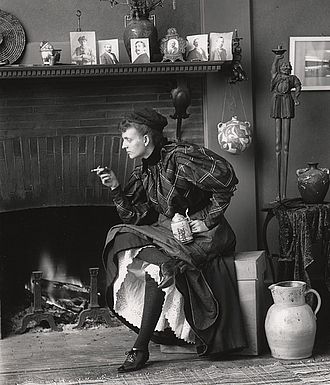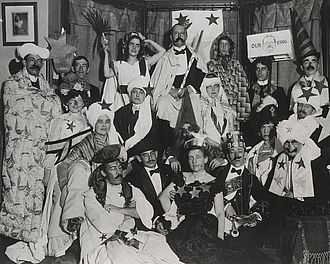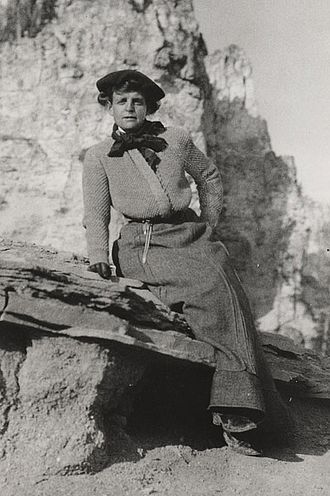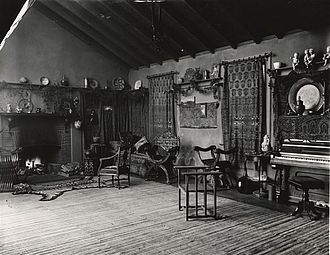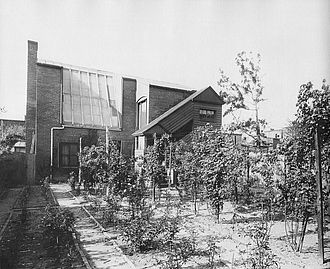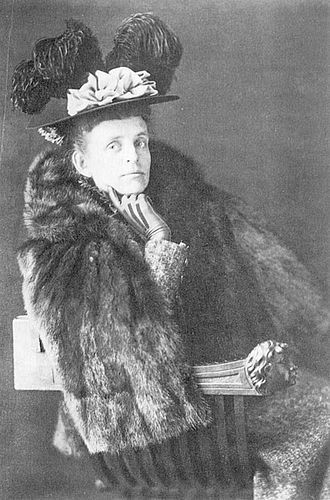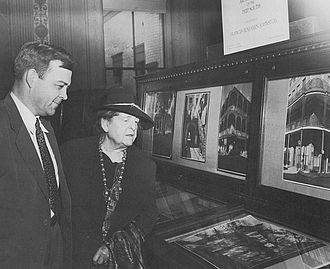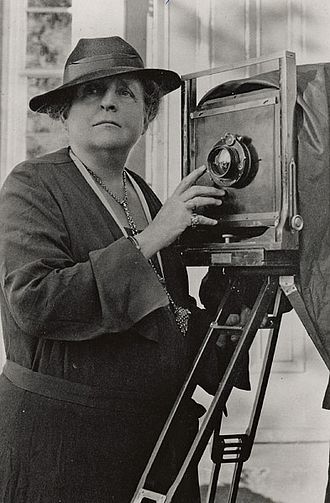The Manuscript Division of the Library of Congress has some 17,000 items of Johnston’s correspondence; these documents reveal far less than might be expected.
Johnston was a fiercely independent person who often scoffed at social conventions; yet her private life remains hidden behind a veil of Victorian manners. Her letters speak lightly of the weather, of travel, and other polite topics that frustrate the biographer. More often her surviving correspondence concerns business details or notes she made to herself regarding her work. She might, for example, make a notebook entry that explained the coloration of a garden scene so that she could make a hand-colored print at a later time. Her papers reveal that she was absorbed by her photography and often did not give proper attention to business matters, sometimes even failing to open bills.
Her friends referred to Frances as a small, frail, but very attractive woman. Photographs reveal little of the fragility but rather capture her dynamism and strength. Surprisingly, Johnston’s correspondence contains little that illuminates those friends and their relationship to her. Those who did write to her would occasionally mention roasting corn or apples, or singing, or just sitting around talking and drinking wine. A better description of this set can be seen in photographs; Johnston was the centrice.
Johnston really lived two lives during the 1890s. She was a properly conventional Victorian woman who had entry to the White House and the circles of official Washington. But, on the other hand, her friends and associates were artists, poets, playwrights, and actors whose lifestyles often mocked the Victorian conventions that Johnston publicly upheld.
She apparently moved with ease between these two worlds. To the eyes of some of her contemporaries the very fact that she was a woman in a male-dominated profession marked her as an unconventional person. Despite the Bohemian aspect of Johnston’s life, she was neither a crusader nor a reformer. Her work does, however show a comprehensive interest in and concern for humanity, especially for the role of women in American life.
Johnston moved to New Orleans in 1940 and entered a life of semi-retirement. Always independent, she lived a rather lonely life in her last years, but her energy did not subside. Even at this stage of her life she remained staunchly indomitable. “I’ve learned not to depend on the Lord. I’ll make the changes myself.” She loved to roam the French Quarter and sit in bars and talk. Once when someone recognized her as a famous photographer, she agreed, “Yes, I’m the greatest woman photographer in the world.”
